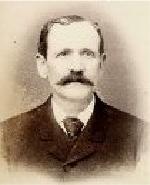Ann Haber Stanton's new book Jewish Pioneers of the Black Hills Gold Rush (Images of America Series)
 |
| Photo by Ann Stanton |
Ann Haber Stanton has been a long time supporter and contributor to the web site. She is the recognized Jewish Historian for South Dakota
For several years, I have quietly followed her book development, writing and now the final published product. The story behind her book writing is extremely interesting and may never be told. Her dedication to history and the love of the Black Hills is without equal.
Book is published by Arcadia Publishers and was released April 25, 2011 .
 |
| Photo by Arcadia Publishing |
There is a new Wild West story about Jews of the American frontier you won’t see anywhere else. After 20 years of research, countless hours spent spinning through decades of historic newspapers on microfilm, picking carefully through yellowed records, scrutinizing old photographs with magnifiers, interviewing anyone with a memory, finally the secret is opening up. I’ve pieced the story together, and the Jewish Pioneers of the Black Hills Gold Rush no longer hide in the shadows.
I had to write this book. To me it was a shandeh, a shame, that noone had written of them or even spoken of them before. Was their story going to evaporate into the ether? Could I allow that to happen? I knew that this would be my calling, my labor of love, and, in fact, part of why I live in the Black Hills . I promised myself I would tell their story as best I could so that future generations would know that the Jews left a footprint here. We can take pride in who they were and what they accomplished.
Certainly, the California Gold Rush of 1849 got more acclaim, and the Jews of that epoch, such as Levi Strauss of blue jeans fame, got more attention in the literature and the media. But the Black Hills Gold Rush with its Jewish element still goes relatively unrecognized. This, despite the fact that the Homestake Gold Mine, purchased in 1877 by George Hearst has been the longest continuously operating gold mine in the country, functioning for 120 years and producing untold billions in treasure. And the Jews were in that picture.
In the spring of 2010, Arcadia Publishing saw the potential of the topic as “exciting” and offered to publish this in their Images of America series. However, they expected what seemed to me at first an impossible number of photographs and other images. Fortunately for me, I was well enough acquainted with the staffs at both the Adams Museum Journey Museum Rapid City
The HBO series “Deadwood” was wildly popular for a while. Although it was fictional, it was woven together with some incidents and characters that were based in reality. For example, Solomon Star, who was Jewish, and Seth Bullock, who was not, actual historical figures, were among the leading characters of the series. The two were business partners who had made their way from Helena , Montana Dakota Territory , in 1876, the earliest days of the Black Hills Gold Rush, where opportunity was limitless. Both had been prominent in government and business in Helena
There were many Jewish pioneers in the Black Hills ; in fact, there were “hundreds,” according to Blanche Colman, daughter of Nathan and Amalia Colman, and destined to become the first woman to pass the bar in the State of South Dakota Mt. Moriah Historic Cemetery
Different accounts describe the scene in the Black Hills during the Gold Rush years. Allowing for the space of possibly 50 years between these two excerpts, you could hardly find two perspectives more completely divergent, one conveying the wildness of the place, the other presenting the more peaceful, idyllic side of the picture:
"Upon looking closely I saw they were pursued by Indians. The horses ran to the barn as was their custom. As the horses stopped I rode along side of the coach and found the driver John Slaughter, lying face downwards in the boot of the stage, he having been shot by the Indians. When the stage got to the station the Indians hid in the bushes. I immediately removed all baggage from the coach except the mail. I then took the driver's seat and with all haste drove to Deadwood, carrying six passengers and the dead driver."
Calamity Jane, Autobiography
"Rising sharply out of the undulating prairies of South Dakota are the Black Hills, unique and majestic in beauty, imbued by nature with foundations of gold, studded with forests of pine and spruce, favored with sunshine, presenting a natural playground which affords a haven of contrast from the burdens and tense activities of the more populated sections of this beloved land. Nestled in the heart of the Hills, in the extreme Western part of Lawrence County, lies the little city of Deadwood, located by sturdy pioneers, lured by the discovery of gold in the early days of 1875 and 1876, approximately 14 years prior to the admission of South Dakota to statehood.”
Blanche Colman, last of the original Jewish pioneers
How did the wild root become such a peaceful shrub? And how really peaceful was it? This book is a good starting place. Now that Jewish Pioneers of the Black Hills Gold Rush has been released by Arcadia, and their stories are beginning to see the light of day, there is a much deeper, broader chronicle that still needs to be related… but that’s for another day.
Jewish Pioneers of the Black Hills Gold Rush is available on Amazon. If you would like an autographed copy, it costs $25 which includes the book, tax, and S&H. Please contact the author, Ann Haber Stanton, at maswired@yahoo.com.
Book Signing May 12, 2011
 |
| Photo by Adams Museum Deadwood SD |




0 comments:
Post a Comment